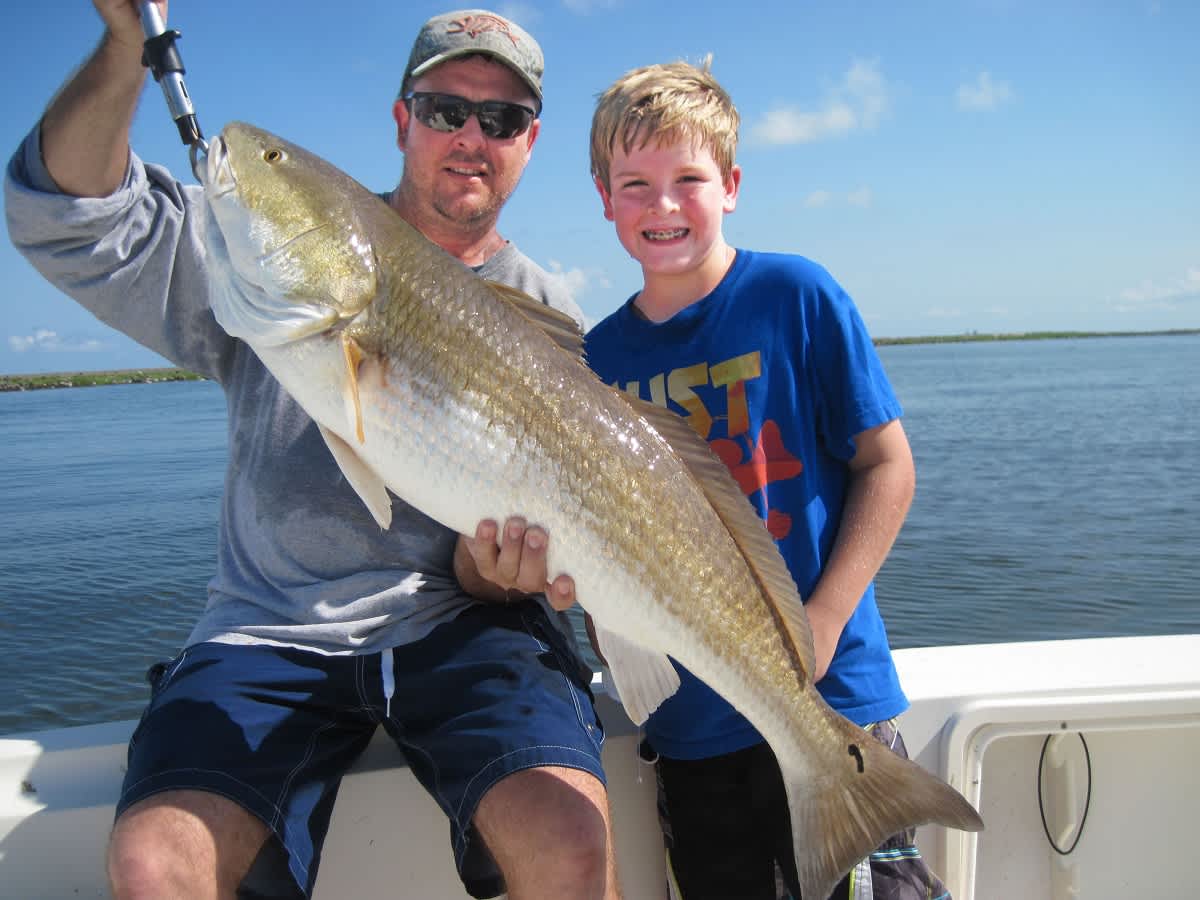Catching Specks and Reds on the Gulf Coast
John E. Phillips 08.06.14

Across much of the nation, August and September are the hottest times of the year to go inshore saltwater fishing for speckled trout and redfish. Many state and federal marine resource agencies have built extensive inshore artificial reefs that consistently produce large numbers of speckled trout, redfish, white trout, sheepshead, black drum, and an occasional flounder. Certain anglers and guides know how to catch the biggest speckled trout and reds from these public reefs.
The tactics of Captain Gary Davis
“I like to get up early, catch some live shrimp, finger mullet, and other baitfish and get to the public reefs before daylight,” Captain Gary Davis of Magnolia Springs, Alabama (251-942-6298 or 251-965-2135, or tidewaterfishing@live.com), explains. “I want to be the first person on the reefs, shut my motor down, and let the winds or the tides float my boat across the reefs.” Using this tactic, Davis and his party usually will catch plenty of speckled trout and redfish, before most anglers reach the inshore reefs and run their motors across the reefs, disturbing the fish. “Noise is the biggest enemy of an inshore fisherman, especially on public reefs. When the fish hear anchors hit the bottom, trolling motors run, and people make noise in the boat, the fish will move off the reefs.”
As the fishermen start invading the reefs, Davis moves out away from the artificial reefs—about 50 to 100 yards, to be exact. He looks for slicks, which occur when schools of fish start feeding on bait fish and shrimp. The oil rises to the surface, creating the slick. By watching the direction that the slicks are moving, Davis can stay ahead of the specks and reds and cast to the schools. He only uses the current or the wind to propel his boat.
After the fish move off the reefs, a second indicator of where to find specks and reds is to watch the surface of the water for shrimp jumping or bait fish activity, usually what happens when a school of specks or redfish under the school of shrimp or bait fish force the bait to the surface.
Davis fishes with eight-pound test line, a No. 1 Sea Striker hook, and either a Finesse soft-plastic swimbait or a live shrimp with no lead or cork.
Techniques from Captain Sonny Schindler
Captain Sonny Schindler (228-342-2295 or www.shorethingcharters.com), who fishes public and natural reefs out of Bay St. Louis, Mississippi, also believes in getting to the reefs before anyone else shows up. He drifts with the wind and current over the reefs. “We like to bait with live croakers, because they’ll stay alive much better in hot weather than shrimp do,” Schindler says. “Once the trout or reds start feeding actively on the croakers, we change over and begin fishing grubs. Then, we can catch more fish quicker without having to rebait.”
Once other fishermen show up on the reefs, Schindler and his anglers go bird hunting. “When we see seagulls diving on schools of bait fish or shrimp, we know that about 99 to 100 percent of the time, a good school of speckled trout or redfish are forcing the bait to the surface,” Schindler explains. “When the bait comes to the surface, the bait is an easy meal for the large flocks of seagulls.”
Probably the biggest mistake most anglers make who try to fish for specks and reds under the birds is they crank up their big outboards and run to within casting distance of the diving birds. However, when these anglers get within casting distance of the birds, they spook the fish they’re trying to catch.
According to Schindler, “By watching the birds, we can see the direction of travel that the schools of trout and redfish are taking. So, we try to get upcurrent or upwind of the school, stay 200 or 300 yards away from the school and let the forces of nature move our boat to within casting distance of the school. With this method, we catch the fish on the outside of the school first, next, the fish in the center and finally, the fish at the back. If we fish one or two schools of specks and reds where the birds are working, we usually can limit out on both species.”
No matter the size of the fish that Schindler and his party catch, he almost always uses a dip net to land the fish, takes the fish out of the net, unhooks the fish, and then puts it in the ice chest or returns it back to the water. “I don’t want any fish flopping on the bottom of my boat, because the sound goes down in the water and will spook the school of specks and reds we’re trying to catch,” Schindler explains. “Noise is the biggest enemy of the inshore reef fisherman.”
John E. Phillips includes many inshore fishing tactics in his eBooks, Secrets for Catching Red Snapper and Grouper in the Gulf of Mexico, Alabama’s Inshore Saltwater Fishing: A Year-Round Guide for Catching More Than 15 Species, and Fishing Mississippi’s Gulf Coast and Visitor’s Guide.

